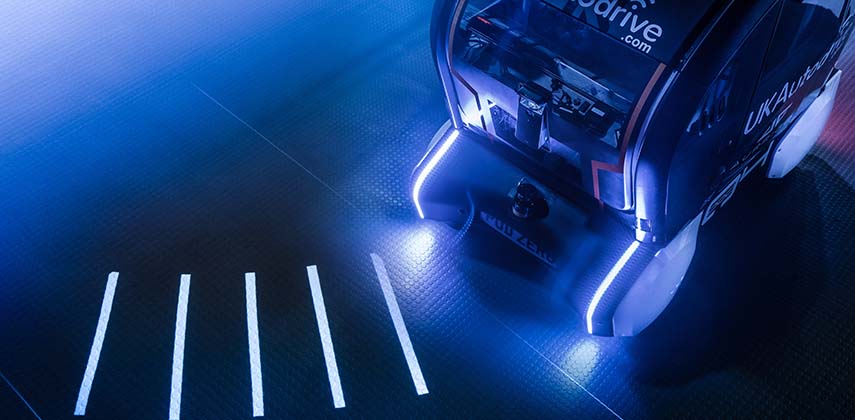Jaguar Land Rover has developed a system that projects the direction of travel on to the road ahead of self-driving vehicles, to tell other road users what it is going to do next.
The intelligent technology beams a series of projections on to the road to show the future intentions of the vehicle – for example stopping and turning left or right – as part of research into how people can develop their trust in autonomous technology. In the future the projections could even be used to share obstacle detection and journey updates with pedestrians.
These projections, tested on autonomous pods developed by Aurrigo, feature a series of lines or bars with adjustable spacing.
The gaps shorten as the pod is preparing to brake before fully compressing at a stop. As the pod moves off and accelerates, the spacing between the lines extends. Upon approaching a turn, the bars fan out left or right to indicate the direction of travel.
Trials were set up by a team of advanced engineers, working in Jaguar Land Rover’s Future Mobility division, supported by cognitive psychologists, after studies showed 41% of drivers and pedestrians are worried about sharing the road with autonomous vehicles.
The system was tested on a fabricated street scene at a Coventry facility with engineers recording trust levels reported by pedestrians both with and without projections.
The trust trial programme – which also included fitting of ‘virtual eyes’ to the intelligent pods in 2018 to see if making eye contact improved trust in the technology** – was conducted as part of Jaguar Land Rover’s government-supported UK Autodrive project.
Pete Bennett, future mobility research manager at Jaguar Land Rover, says: “The trials are about understanding how much information a self-driving vehicle should share with a pedestrian to gain their trust. Just like any new technology, humans have to learn to trust it, and when it comes to autonomous vehicles, pedestrians must have confidence they can cross the road safely. This pioneering research is forming the basis of ongoing development into how self-driving cars will interact with people in the future.”

